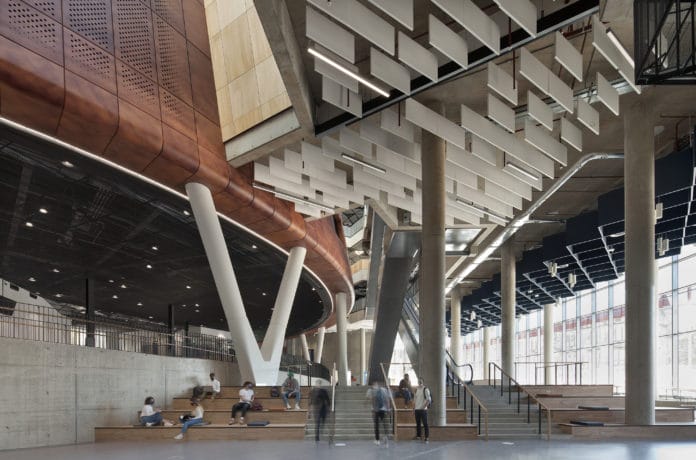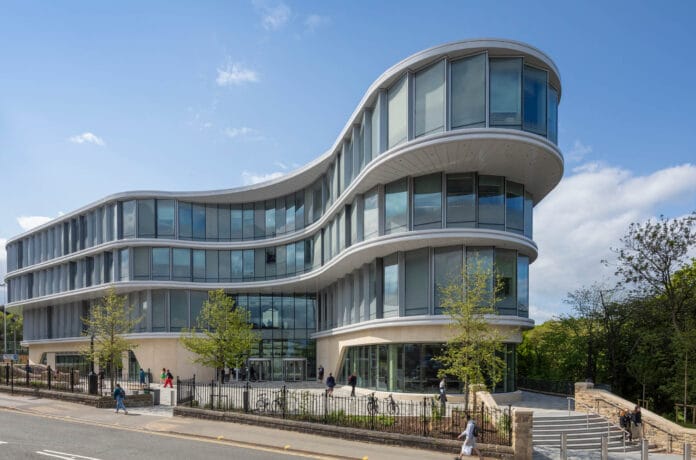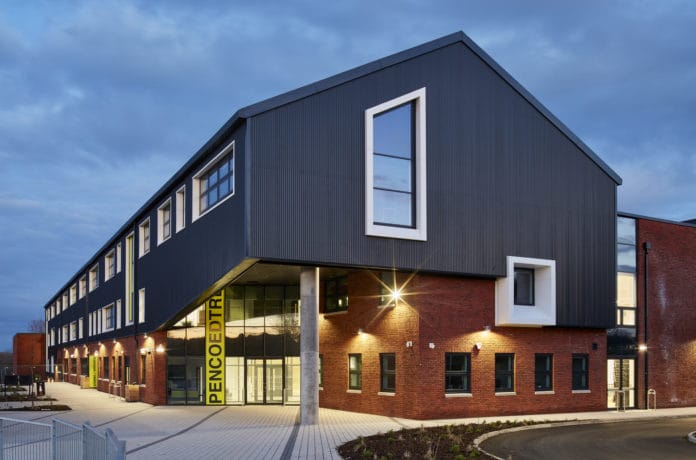
HLM’s Education team explore how architecture can enhance the student experience and support changing educational pedagogies.
The future of higher education and how it will evolve is largely unknown, however we are committed to following and understanding the challenges facing the education sector, and designing projects that respond to the needs of academics and students alike.
With a portfolio of projects based on close consultation with stakeholders, HLM’s Education team has been aware of the shift in mindset away from the traditional method of static lecture theatres for some time. As early as the beginning of the 20th Century, the lecture method has been identified as having a remarkably low rate of students retaining the information covered within a lesson. Showing greater retention rates than this were reading, audio-visual, demonstration, discussion groups, practice by doing, and teaching others.
While universities have over time adapted to a more varied approach to teaching and learning in recognition of this, it is only recently that new facilities have been specifically designed to provide flexible environments for students and staff. Teaching as a requirement is universal, but the methods vary widely depending on culture and context. To gain a wider understanding of how other countries, who were ahead of the UK, were embracing the individual needs of students and subjects, HLM travelled to Australia and America. The creativity of the designs that we saw, which reflected the flexibility of the teaching and learning needs directly, influenced our own creative design approach back in the UK.
Opened in 2022, the James McCune Smith Learning Hub, which we designed for the University of Glasgow, is a prime example of how we implemented these design approaches. The 24/7 accessible building provides a shopfront for active learning, and responds to individual preferences regarding hours spent studying. Evidence suggests a direct correlation between students spending more time on campus and achieving better academic results; the brief was therefore to develop a ‘sticky’ campus, which would encourage students to spend more time on campus, discussing, socialising and focusing as well as attending lectures. To support learning in ways that suited students’ varying needs, the ‘grungy’ building was also a pre-requisite from the University team – a range of spaces that students can take ownership of, re-arranging the furniture as needed without it being re-ordered every night.
The same principles have been applied to the new Social Sciences Hub for the University of Sheffield, which is currently under construction and due to open in 2023. The design embraces the idea that ‘every learning space should be active’ and therefore includes shallow raked, large volume learning spaces that support both traditional and active learning, alongside technology rich group working areas and individual study spaces. Close engagement with the University staff and students has created a forward looking, flexible learning environment, that supports modern methods of learning as well as users’ mental health and wellbeing.
Higher education requires buildings that create modern, innovative environments that encourage debate and analytical thinking. They must support the idea of access to learning any time, anywhere and be supported by a robust technology support team, in acknowledgement of the need for constant, reliable connectivity. Rather than allocated classrooms or lecture theatres, all spaces can, and should, be utilised for education, which as we have identified, takes many different forms. As teaching itself becomes more fluid and less formal, so too do the spaces; any space can be used for teaching and learning, as well as socialising and relaxing.




